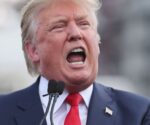World’s nuclear weapons mapped as horror ‘miscalculation’ risk grows amid rising tensions | World | News
The risk of a disastrous miscalculation is rising, said Dr Paul Van Hooft (Image: Getty)
The world’s nuclear arsenal is growing and with it the danger that misjudgment or brinkmanship could trigger a disastrous conflict, an expert in proliferation has warned. As geopolitical tensions intensify, long-dormant fears of a nuclear arms race have returned with force.
And Dr Patrick van Hooft, associate political scientist at RAND Europe, worries that this new phase is more unstable, unpredictable, and potentially more dangerous than the Cold War. A new report by the Stockholm International Peace Research Institute (SIPRI) has highlighted the speed at which states are modernising, expanding, or outright rebuilding their nuclear capabilities.
China’s rapid acceleration is a central concern — and a specially commissioned map graphic by the Express illustrates the pace and scale of change across all nuclear states.
Dr Van Hooft said the world is entering a far more complex and volatile strategic environment.
He told the Express: “The Cold War was a bipolar conflict, which saw most nuclear weapons concentrated in the hands of the US and the USSR. There are more nuclear-armed states now, with more risks for overspill between regions.”
He added: “Specifically with China, a now fully-fledged superpower, the risks of miscalculation during peacetime with the acquisition of new capabilities — and during wartime — are now much greater, because it is harder to interpret signals.
“The US may adapt its posture because of Russian actions, China adapts because of the US, India adapts because of China, and Pakistan adapts because of India. A little simplistic, but still a fundamental difference from the Cold War stand-off.”

Russia, led by Vladimir Putin, and China, led by Xi Jinping, have almost 5,000 warheads in total (Image: Getty)
SIPRI’s latest data suggests China now has 600 nuclear warheads — up from 500 last year — and could have more than 1,000 by the end of the decade. The country is investing heavily in long-range missile silos, nuclear-capable bombers, and submarines, in what amounts to its first full nuclear triad.
The scale of the build-up is triggering alarm in Washington, where military planners are increasingly grappling with what they call the “Two Peer Plus” problem — the need to deter both China and Russia, while also accounting for the growing threat posed by North Korea.
He said: “The United States, according to a bipartisan report published for Congress in 2023, is worried that its arsenal is insufficient to deter both Russia and China — and North Korea. The modernisation and expansion of arsenals can make assessments more difficult for policymakers in a system with multiple nuclear powers.”
Russia still maintains the largest overall stockpile, with a total inventory of 5,459 warheads, followed by the United States with 5,177. But more than a dozen countries either possess nuclear weapons or host them under alliance agreements — and many are now pressing ahead with modernisation programmes of their own.
The UK, for example, has pledged to increase its cap on warheads and is upgrading its submarine fleet. France continues to invest in air-launched and sea-based systems. India and Pakistan are refining their delivery capabilities, while Israel — though undeclared — is widely believed to have a robust second-strike force.
And then there is North Korea, which SIPRI now believes has 50 warheads and is rapidly improving its missile range and survivability.
Dr van Houtte said one of the biggest challenges lies in the breakdown of global dialogue and verification mechanisms — particularly those inherited from the Cold War era.
He said: “This is a serious issue. It is easy to forget that it took a long time to build any kind of trust during the Cold War. But arms control does not start with trust. After all, we do arms control with adversaries, not with our friends.”
The collapse of key arms control agreements — including the INF Treaty, the Open Skies Treaty, and serious doubts around the future of New START — has undermined transparency and raised the risk of misunderstanding or miscalculation.
He said: “We should continue arms control discussions — even if just to improve our understanding of the other side — at the same time as we are strengthening defence and deterrence.”
Asked what steps nuclear powers should take now to reduce risk, he said establishing clear, reliable communication channels is more urgent than ever.
He said: “Invest in continuous channels of communication, even if only between experts. It cannot prevent deliberate escalatory actions from leaders with bad intentions, but it can dampen the risks of escalation due to incomplete or incorrect information, or misperception of the other side’s intentions.”
He added: “Investing in diplomacy and exchanges is a very cost-effective way to ensure this.”
The current crisis is not driven solely by one country or region. Instead, a series of overlapping rivalries — between NATO and Russia, China and the US, India and Pakistan, North and South Korea — are all feeding into a global arms race that is harder to control and more likely to escalate.
And with more warheads, more launch platforms, and more actors involved than ever before, experts say the margin for error is shrinking fast.
Dr van Houtte said: “The modernisation and expansion of arsenals can make assessments more difficult for policymakers in a system with multiple nuclear powers.”
As the SIPRI report makes clear, the nuclear risk today is not only that weapons will be used — but that leaders may misread one another in a crisis.







